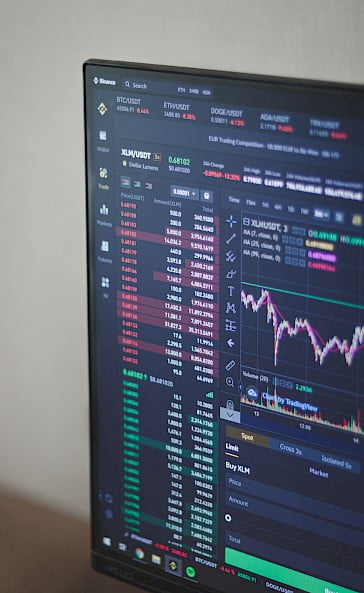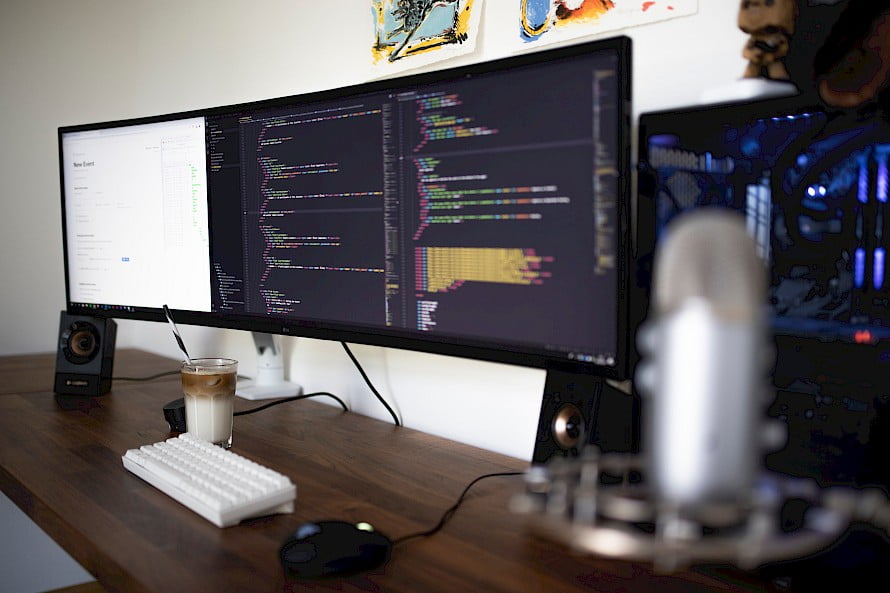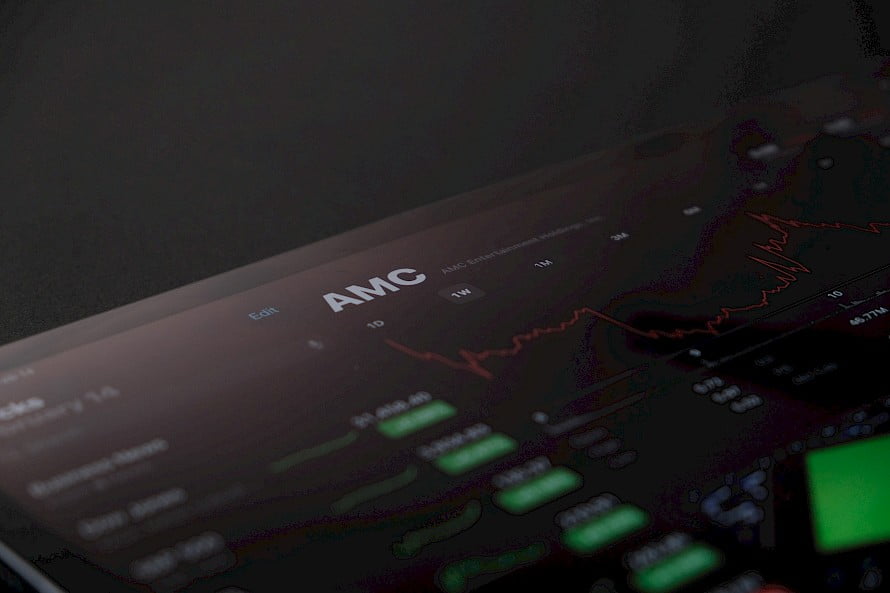WHAT IS MONITORING? ADVANTAGES, REQUIREMENTS & MORE
Monitoring is becoming increasingly relevant for the supervision of business processes. In our article you will find out more about the advantages, data protection and co.
In this article:
- Monitoring: Supervision of business processes becomes increasingly relevant
- What is monitoring?
- How does monitoring work?
- Overview of the different types of monitoring
- What does remote maintenance mean?
- Digital signage monitoring: What are the opportunities for businesses?
- The advantages and disadvantages of monitoring
- Which monitoring software is available?
- Data protection: The legal situation
- What should be included in a maintenance contract?
- Conclusion
- FAQ
The most important information in a nutshell:
- Monitoring describes a process of documentation, guarantee of safety and evaluation of data
- Supervision of these processes is an important indicator to figure out key numbers in business
- There are different types of monitoring
- To avoid possible misunderstandings in data security, a maintenance contract is recommended
Monitoring: Supervision of business processes becomes increasingly relevant
Thanks to the given possibilities of digitalization, working processes of businesses become more efficient. For example, software automates processes and saves costs. But the advantages don’t only become visible in the usage of modern working methods but in their measurability too. FRAMR gives further insights into the advantages of monitoring and what businesses have to consider when choosing the right methods.

Not only interesting in the blockchain sector: Software monitoring | © Behnam Norouzi
What is monitoring?
The term “monitoring” pretty much means “supervision” and describes all processes to measure and evaluate specific data under use of technical tools.
The controlled processes depend on industry and area of operation. A common goal of monitoring is to capture, measure and observe business related working processes to provide safety and quality standards. Aspects of safety are especially important because a detail oriented supervision of technical processes provides the possibility to prevent software failures and execute updates fastly.
Almost every industry is provided with advantages of monitoring and the possibilities of supervision are broadly diversified. Monitoring is used in the industries of medicine, digital signage, search engine optimization and finances. Usage and goals depend on the industry. Monitoring provides many attractive options in online marketing because businesses get further insights into relevant KPIs and therefore can optimize their processes successively.
How does monitoring work?
Basic requirement of monitoring is the connection between software and network infrastructure so that the desired processes can be measured. To guarantee flawless functionality, modern and foremost high quality technique is required.
Through the usage of monitoring software, businesses are given the possibility to collect and evaluate specific data. But in the foreground is not necessarily the evaluation of KPIs but, for example, the supervision of hardware and network infrastructure.
In most cases businesses claim services of third parties of the IT industry. In exchange for money they receive a license which allows them to use monitoring software. As monitoring programs are hard to operate, an induction phase or internal workshop is necessary. Alternatively, there remains the option of remote maintenance, whereby the entire monitoring infrastructure is provided by an external provider.
Overview of the different types of monitoring
There are different types of monitoring. Mostly, monitoring is divided into three categories: Business, customer and market monitoring. This separation can be further specified (for example, website monitoring). Following, we will give descriptions of the most commonly used methods.
Application Performance Monitoring
The goal of application performance monitoring is to check functionality of applications and programs to improve user experience. Different options are available to achieve this goal. The used tools help to determine flaws and attain important information about data transmission speed.
Business Transaction Monitoring
As the name reveals, business transaction monitoring is all about supervising business processes. The goal is to optimize these processes which are directly connected to business transactions. A good example for that is the ordering process of an online shop and online payments.
System Monitoring
The goal of system monitoring is to review performance of a computer. Important measurements are determined in the first step, for example the performance of a network or the available amount of storage space. Under consideration of these aspects, the evaluation follows in the next step.
What does remote maintenance mean?
In connection with monitoring, another term is often mentioned: Remote maintenance. That means the administration of monitoring software is provided by a central location and external access to software as well as hardware is possible. Good and reliable hosting is essential because technical difficulties and required updates may lead to failures.
An often used method of remote maintenance is cloud monitoring. The centralized data backup through cloud based solutions comes at lower risk because software and other technical applications work without internet connection as well. Other than that, cloud computing provides high safety standards because administration is provided by a professional protected data center.

Cloud computing: A meaningful method for businesses – safety and regular updates are guaranteed! | © Caspar Camille Rubin
Digital signage monitoring: What are the opportunities for businesses?
Digital signage is often used in marketing and for good reason. The screens, assuming they are used as digital billboards, enable fast reaction times and the flexible customization of displayed content on a changing target group (in shopping malls for example). That creates potential for optimization in marketing based on KPIs.
But the amount of advantages reaches even further: Providing information through a central station and regular updates on a server expand the functions for all screens.
Remote maintenance is particularly useful for digital signage because digitized business processes require flawless functionality. The worst case scenario occurs when someone, for example, uses an information terminal and it doesn’t work or a player / signage device is offline and nobody notices that it’s not provided with new content. Cloud computing eliminates problems like these because regular updates and maintenance are provided by an external supplier who controls the events.
FRAMR. – The easy and intuitive digital signage solution
FRAMR is THE solution for easy and intuitive administration of digital content. Our offer fits the needs of all businesses which want to expand their digital processes and set an unforgettable customer experience as priority.
Our products convince with the following advantages:
- Maximum performance
- High flexibility
- Independency
- Safety
- Storage space
- Connection with leading hardware brands
But that’s not all! Our subscriptions promise a huge diversity of functions and modules. Administration and maintenance is provided by a strongly performing as well as GDPR compliant cloud. Updates, troubleshooting and other important changes is what you receive with a license. High quality is guaranteed and you can concentrate on your business.
What are the advantages of monitoring?
The advantages of monitoring are better quality and more safety of supervised processes. Other than that, monitoring provides a fast reaction to sudden failures as well as to maintenance and updates. Using monitoring for marketing comes with many advantages too because relevant KPIs are easier to evaluate.
Overview of the advantages of monitoring:
- Providing safety
- Evaluate marketing KPIs
- Recognizing potential for improvement
- Execute updates
- React fast on software failures
- Providing important functions
- Prevention
Provide safety
With targeted monitoring, necessary maintenance work is carried out while maintaining high safety standards.Monitoring prevents the disruption of internal business processes and ensures smooth processes.
Evaluate marketing KPIs
Digitalization creates measurability. Evaluated data and results can be analyzed directly thanks to the usage of monitoring. Measuring relevant data has a significant impact on following events within a company and decision makers can determine important economical steps based on evaluated data.
Recognizing potential for improvement
Optimization not only concerns economical factors but also aspects of safety. In fact, businesses have the advantage to optimize all processes, no matter if it’s documentation, expanding technical systems or response time to possible problem fixes.
Execute updates
Updates provide better performance of technical processes as well as they ensure keeping up with required standards. For software, functions can often only be used to a limited extent if important updates are not carried out.
React fast on software failures
Software failures can’t be prevented completely. Targeted supervision ensures fast reaction and people in charge can get the system running again.
Providing important functions
This advantage concerns remote maintenance. When the portfolio of functions is updated, an uncomplicated expansion takes place through a central location. This means that updates do not have to be carried out independently or by an internal team – this is done by an IT service provider.
With remote maintenance, businesses take advantage of financial relief, because there are no additional personnel or training costs for hosting the monitoring software.
Prevention
More important than problem fixing is prevention of possible disruptions or obstacles. Problems or shortages in resources should not get fixed when they appear. Businesses rather recognize these problems early and react directly. Problems or failures are often a result of a row of incorrect processes and monitoring provides enough transparency here.

Measurability: One of the most important reasons for monitoring | © REEET Jank

What are the disadvantages of monitoring?
Data security is an important topic to consider and the number of warning letters because of personal data breach has increased in the past years. Monitoring is no gray zone as long as you use personal data responsibly. But that’s exactly the point: To prevent data privacy violations, a maintenance contract is necessary (keep reading!). In many collaborations it is exactly this aspect which is disregarded and ultimately leads to warnings or similar problems.
Another disadvantage is to keep yourself too busy with numbers, data and facts. Evaluations and measurable results are important but if businesses are too focused on determining KPIs and with documentation of relevant numbers then business related decisions might take too long.
For many people this doesn’t make sense because measurable results and numbers normally make decisions easier. But take a look at this from a different perspective: Imagine you have all the relevant data for your business processes and at the same time your team collects different ideas to execute or to improve business structures. The selection is big and that makes the decision harder. Information and measurability are good but too much information slows down the decision making process.
Which monitoring software is available?
There are many different variants of monitoring software available on the market and mentioning all of them would take too long. Therefore, we will take a closer look at three types of monitoring: Software as service (SaaS), proprietary and open source.
Software as a service (SaaS)
Software as a service is defined by external administration of monitoring software through a third party provider. A subscription allows customers access to specific functions. The biggest advantage of SaaS monitoring is the potential money saving for businesses because it’s a remote maintenance through which IT services providers take care of updates, maintenance, installations and safety.
Proprietary monitoring
In case that monitoring is not carried out to an external IT service provider, license based options offer a good alternative. Proprietary monitoring means that businesses get access to monitoring software in exchange for a monthly fee. Required updates and problem fixing are ensured by the licensor.
Open source monitoring
Open source monitoring is similar to proprietary monitoring but with one significant difference: The provided tools are for free. However, less costs also means less quality. Necessary updates need to be done by businesses themselves and hosting might cause a problem when there is no qualified expert hired. Remote maintenance is highly recommended. That costs money but all in all it’s still cheaper than SaaS monitoring.
What is the difference between monitoring, reporting and controlling?
The terms monitoring, reporting and controlling aren’t synonyms although they sound similar.
Monitoring: Monitoring describes supervision of technical processes. It’s actually like a general term for all measurements and observations of processes within a system.
Reporting: Reporting prioritizes collecting and processing business related data such as KPIs. Companies record this data in so-called “reports” and use them to optimize processes. These reports don’t only consider economical factors but general information about a company.
Controlling: Controlling is part of business administration and deals with planning as well as with coordinating a company. It’s distinguished between strategic and operative controlling. Strategic controlling deals with market analyses and potential development of the market whereas operative controlling deals with organizing budget and makes decisions based on determined numbers to use resources more efficiently.
Basically, monitoring describes a general process. The goal is to get access to relevant numbers with support of technical devices. Reporting is more specific which collects information about a company. Controlling on the other hand is all about figuring out economically relevant numbers and making decisions based on that.
Data protection: The legal situation
Remote maintenance and connecting technical devices with external IT systems raises the question of data protection. The actual difficulty is that there is no law to specify that.
To prevent possible misunderstandings and data protection breaches, a maintenance contract is recommended. Such a contract not only regulates and determines rights and obligations but data protection aspects as well. The parties are free in creating the contract but some clauses should consider the legal situation and clarify the processing of personal data as well as secrecy about it.
What should be included in a maintenance contract?
A legally secure maintenance contract shouldn’t give any space for interpretations and clarifies the most important questions about the collaboration between companies.
These are the most important components of a maintenance contract at a glance*:
- Maintenance item
- Rights and duties of the contract parties
- Contract period
- Cancellation
- Scope of services
- Liability for defects and warranty
- Maintaining
The components of a legally secure maintenance contract should be determined individually and based on the interests of both parties. There are templates to create such a contract but more efficiently is to talk to a lawyer. Violations against the GDPR cost a lot of money and legal consulting will clear things up. The risks reach much further because the majority of actions on the internet provide consent. With good legal consulting you are safe.
→ What is data management? Strategy, tasks & advantages
Our final recommendation: Use backup software
Using software always comes with risks even when developing teams keep up to high standards and qualified software testers check the end result. Still, we highly recommend performing a backup when using monitoring software. Backup software is an additional storage medium which creates a safety copy of existing data. Especially in monitoring, saving data can be an important factor because many evaluations (KPIs for example) are relevant for economic development of a business.
Conclusion
Monitoring makes working processes of companies easier and allows them to focus on their key business. Potential for saving money is especially possible in evaluation KPIs, although businesses shouldn’t focus on these numbers too much. Central administration makes it possible that business required applications are used safely and get updated regularly. In case of remote maintenance, a contract is highly recommended to clear up any misunderstandings regarding data protection.
FAQ
Lastly, we will answer frequently asked questions about monitoring and remote maintenance.
There are many different types of monitoring. The three most common ones are business, customer and market monitoring.
Monitoring software helps companies to figure out business related numbers such as KPIs but also to measure technical processes and to prevent risks.
Contact us
*Legal notice: All information in this article is for general information purposes only. It does not constitute legal advice in individual cases and cannot and should not replace such advice.
Sources
https://www.acronis.com/de-de/articles/monitoring-tools/
https://www.juraforum.de/muster-vorlagen/wartungsvertrag
Pictures: © Canva.com
